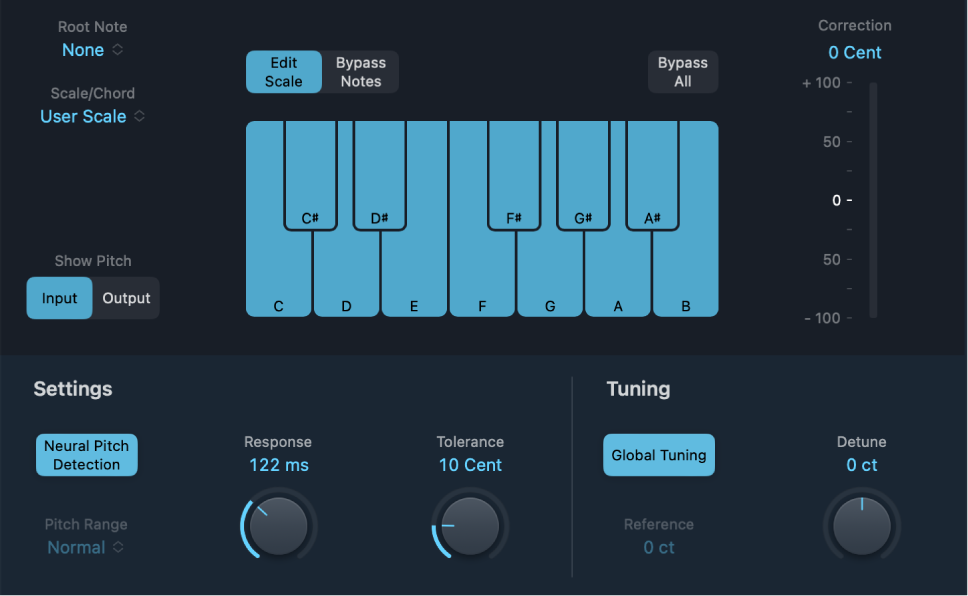Pitch Correction controls in Final Cut Pro for Mac
The Pitch Correction effect offers the following controls.
To add the Pitch Correction effect to a clip and show the effect’s controls, see Add Logic effects to clips in Final Cut Pro for Mac.

Root Note pop-up menu: Choose the root note of the scale.
Scale/Chord pop-up menu: Choose a pitch quantization grid.
Show Pitch buttons: Show the pitch of the input or output signal, respectively, on the notes of the keyboard.
Edit Scale button and keyboard: Click a key to exclude the corresponding note from pitch quantization grids. This effectively removes this key from the scale, resulting in note corrections that are forced to the nearest available pitch (key).
Bypass Notes button and keyboard: Click a key to exclude the corresponding note from pitch quantization grids. In other words, all notes that match this pitch are not corrected. This applies to both user and built-in scale quantization grids.
Bypass All button: Compare the corrected and original signal, or use for automation changes.
Correction display: Indicates the amount of pitch change. The red marker indicates the average correction amount over a longer time period. You can use the display when discussing (and optimizing) the vocal intonation with a singer during a recording session.
Neural Pitch Detection button: Turn on pitch detection to automatically detect the Pitch Range. You can turn it off to set the pitch range manually in the Pitch Range pop-up menu.
Pitch Range pop-up menu: Choose a low or normal pitch range that is scanned (for notes that need correction).
Note: When Neural Pitch Detection is on, it’s not necessary to set Pitch Range manually.
Response knob and field: Set how quickly the voice reaches the corrected destination pitch.
Singers use portamenti and other gliding techniques. If you choose a Response value that’s too low, seamless portamenti turn into semitone-stepped glissandi, but the intonation is perfect. If the Response value is too high, the pitch of the output signal doesn’t change quickly enough. The optimum setting for this parameter depends on the singing style, tempo, vibrato, and accuracy of the original performance.
Tolerance knob and field: Set a zone around the core frequency where no correction takes place. A low value results in more extreme or faster corrections and higher values allow for more pitch variation (for example, vibrato), before any correction is applied.
Global Tuning button: Turn on to use the project’s Tuning settings for the pitch correction process. Turn off to set the reference tuning with the Reference field.
Reference field: Set the reference tuning in cents (relative to the root).
Detune knob and field: Detune the output signal by the set value.
Download this guide: PDF